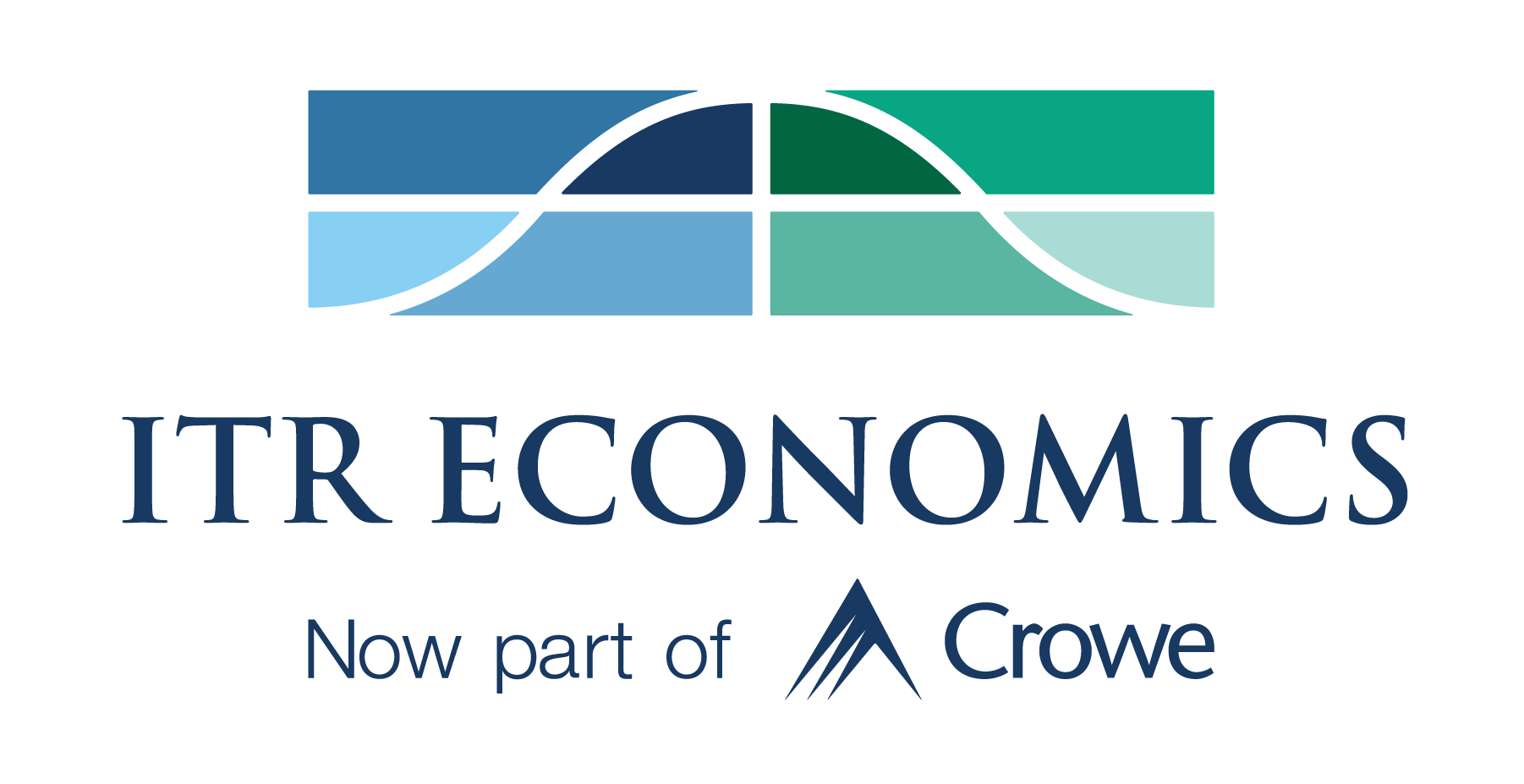- Mon - Fri: 8:30 - 5:00
- +1-603-796-2500
- ITR@itreconomics.com
November 9, 2023
- Home
- portfolio
- TrendsTalk
- November 9, 2023
with Taylor St. Germain
MACROECONOMIC UPDATE
Join us for a very special edition of TrendsTalk, as ITR Economist Taylor St. Germain highlights the current state of the macroeconomy based on the latest GDP data, as well as private investment in the US as it relates to GDP for our 250th episode!
The below transcript is a literal translation of the podcast audio that has been machine generated by Rev.
Hi everyone. My name’s Taylor St. Germain with ITR Economics, and welcome to the 250th episode of TrendsTalk. Important milestone for us, and I’m really happy you’re all able to join me here today. Today we’ll be discussing the macroeconomic environment once again, especially as the most recent GDP data came out, I figured we’d return to our bread and butter topic of what’s going on in the macroeconomy for the 250th episode. So I wanted to talk today a little bit about GDP, but not just GDP, private investment in our country as it relates to GDP, and I’ll explain exactly what I mean as we go throughout this episode today. But first, let me start off with GDP. GDP came out for the fourth quarter data came out, of course, very strong numbers, which is good news here for the US economy.
Now, I do want to highlight that our expectations for next year though have not changed, being that we still do anticipate two non-consecutive quarters of GDP decline. I know a lot of times the media likes to sensationalize the current figure and it was a great figure, I don’t want to minimize that as we look at our growing US economy here in 2023. But I do want to highlight what’s still out there ahead of us as it relates to this mild recession outlook that we’ve been talking about together for months at this point, at least here on TrendsTalk and all the way back to late 2022 for those of you that are followers of ITR on a broader scale.
So still mild recession in GDP next year. Again, mild, non-consecutive quarters of GDP contraction next year with growth followed in 2025. So that comes back to what I had mentioned at the beginning, which is talking about in investments. One of the concerns that we’ve seen out there, especially as we look at the growth that follows the 2024 mild downturn in 25 and 26, is the lack of domestic investment as it relates to our GDP trend. That’s concerning to me because we’ve talked about how mild this recession is. It’s a mild downturn, and thinking about this recession differently in 2024 is really important. This isn’t 08,09 all over again. This isn’t the pandemic. This is a very mild downturn, almost flat when you look at GDP growth rates. So this time should really be a time where we’re thinking about using the slowdown in 2024 to our advantage in making investments that will benefit us in terms of growth in 25 and 26.
So let me call out one of these relationships that concerns us. We look at the relationship between the quarterly value of US GDP, US real GDP, so the deflated figure, and we compare that to US gross private domestic investment in real GDP. And really what we look at is the relationship in that quarterly data. And what we typically see is that as GDP grows, so does that domestic investment. But what we’ve seen lately, particularly in the last year, is that while GDP has continued to grow, we have not seen that same relationship hold true being that we’ve actually seen some of the decline in domestic investment while GDP is growing. And that’s not typically a trend that we see, and that has me concerned for 25 and 26. Again, my concern isn’t that we don’t survive the 2024 downturns, it’s very mild. We’ve been through much worse as an economy, as businesses, and we’ve certainly survived those.
My concern is that we don’t see how quickly that growth in 25 and 26 is returning to the US economy. So to see investment down right now, I’m worried about capacity constraints in the future. Because that growth snaps back quick in 25 and 26, we’re going to find ourselves real busy as an economy here in the US, as businesses operating here in the US. So I’m merging everyone to think carefully about the investments in making these investments in 2024 to benefit that growth that we have projected in 25 and 26. With the labor shortage that’s continuing around the country we need to be hiring during 2024. We need to be making capital investments, automating, innovating where we can so that we’re all ready to take on that growth in 25 and 26.
My biggest fear at this point is that we’re turning away potential growth opportunities as businesses in 25 and 26 because of capacity constraints. So let’s solve those capacity constraints now in 2024 when things are a little bit slower so we’re ready for all of the good times ahead as we look at the second half of this decade, of course, building up to the 2030s. So I hope you found this information helpful. Again, 250th episode, really happy that you’re all here joining us. A lot more good things to come. I’m Taylor St. Germain with ITR Economics, and we’ll see you on the next one.




